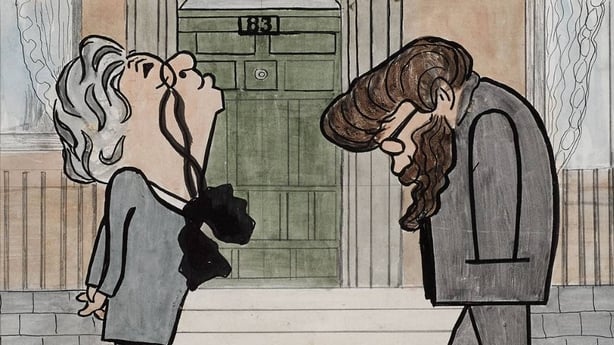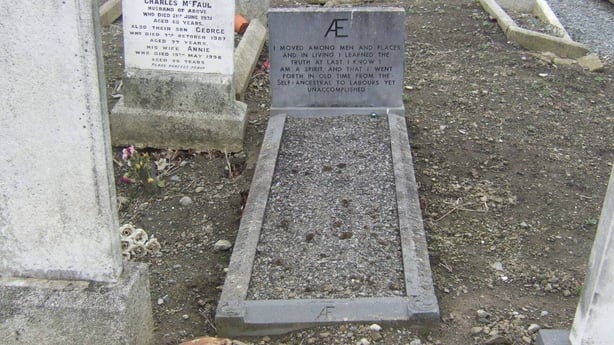The first in a series of events to mark the 90th anniversary of the death of George William Russell (AE Russell) will take place this weekend in Co Donegal.
A sometimes forgotten figure in Irish history, Russell was a renowned political thinker, writer, artist and poet.
An exhibition entitled 'AE Russell: Glenveagh and Donegal' marking the life and work of AE Russell will open at Glenveagh Castle this Saturday.
Russell influenced literary giants such as WB Yeats, George Bernard Shaw and Patrick Kavanagh, as well as international leaders such as former US President Franklin D Roosevelt and Indian independence leader Mahatma Gandhi.
When Russell died in England in 1935, he was honoured with an aerial fly past as his body was returned to Ireland through Dún Laoghaire and his funeral procession was led by taoiseach Éamon De Valera and Yeats.

Jim Conway, a member of the AE Russell International Society, said commemorative events will be taking place nationally and internationally this year.
He said: "AE Russell is regarded as the man that created the modern identity of Ireland" and that "he was an inspiration to WB Yeats, Patrick Kavanagh, James Joyce, James Stephens, Mahatma Gandhi and Pamela Travers, who authored ‘Mary Poppins’".
"Franklin D Roosevelt sent for AE Russell for his guidance. AE advised Roosevelt on the ‘New Deal’ after the Great Depression.
"AE was influential during the 1913 Lockout. He designed the Starry Plough banner for the Irish Citizen Army, which would later become the Starry Plough flag.
"AE Russell was a main organiser of the co-operative movement throughout Ireland, and he was the editor of the Irish Homestead.
"He not only taught farmers about animal welfare and the homestead, but he also taught them about art, literature, mythology and Irish heritage.
"When JFK addressed the Houses of the Oireachtas on 28 June 1963, he completed his address by quoting AE Russell."
Mr Conway said Russell played a key role in agricultural reform within rural Irish communities in the early 20th century through his work with the Irish Agricultural Organisation Society (IAOS).
Russell became assistant secretary of the IAOS in 1897, an organisation founded by Sir Horace Plunkett founded in 1894.
Russell travelled extensively throughout Ireland, helping to develop credit societies and co-operative banks. He encouraged farmers to join the co-operative movement.
IAOS was later reorganised and renamed, as the Irish Co-Operative Organisation Society which remains the umbrella organisation for the co-operative movement in Ireland.
Russell was the editor of the journal of the IAOS, the Irish Homestead (1905-23), and The Irish Statesman (1923-30).

Russell received an Honorary Doctor of Letters degree from Yale University in June 1928.
He is reputed to be the first editor who published the works of Joyce and Kavanagh. He collaborated with Ms Travers as she produced ‘Mary Poppins’.
During his time working with the co-operative movement, Russell influenced Paddy 'the Cope' Gallagher, founder of The Cope (Templecrone Agricultural Co-operative Society) in An Clochán Liath, Co Donegal.
He encouraged him to write his autobiography ‘Patrick Gallagher: My Story’ published in 1939.
Russell was a regular guest of Arthur Kingsley Porter at Glenveagh Castle, Co Donegal, in the 1930s.
He is buried in Mount Jerome, Dublin.
The temporary exhibition titled: AE Russell: Glenveagh and Donegal will open at Glenveagh Castle this Saturday and will conclude on 30 March.
A series of free talks about Mr Russell will be delivered at the Glenveagh Visitor Centre on 29 March.







